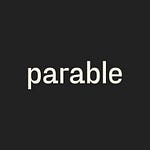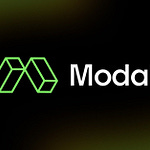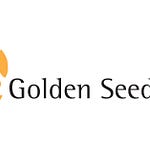Lightning-fast activation. A surge in top-of funnel. Churn due to AI tourism. Lower hurdles for monetization. Fast-changing market.
Your go-to-market can change massively when you incorporate LLMs into your product. The team at Gamma certainly found this to be true. Gamma was founded as a new medium to replace the slide deck, well before the launch of ChatGPT, then experienced a huge uplift in their business after they started deploying generative AI. Their numbers changed, but so did the fundamentals of their go-to-market.
I sat down with Gamma cofounder Jon Noronha to discuss GTM topics like:
How did they expect LLMs would change their GTM, and what actually changed?
What user metrics are they focused on?
How have they handled AI tourism?
What is their strategy for monetization?
You can listen to the conversation or else read the lightly edited transcript below. Enjoy!
If you’d like to learn from more founders about how to scale generative AI companies, subscribe here for free!
Transcript
Allison: Jon, thank you so much for joining us on the podcast today.
Jon: It's a pleasure to be here. Thanks for having me.
A: I'm very excited to chat with you about what go-to-market means for generative AI companies. I think you all are learning a lot and executing really well. And there are a lot of companies that are probably listening to this podcast that are curious to learn from your experience, whether they are generative AI or other types of companies. To start, can you tell us a little bit about what you're doing now and your background?
J: My background has always been in product management. I started my career at Microsoft as a product manager. I actually worked on Bing before it was famous for being a deranged AI chatbot, back when it was just the sort of second-rung search engine. After that I worked at Optimizely for several years where I was a product manager and eventually the head of product. Optimizely was all about A/B testing and experimentation. It went through this journey of starting out as a product-led self-serve business, but then totally pivoted its go-to-market to enterprise, which was a massive transition inside the company. And then since 2020, the pandemic year, I've been working on a startup called Gamma, which is a new medium for presenting ideas. You could think of it as the anti-PowerPoint.
We're trying to take that thing you do in PowerPoint — which is present your ideas to your coworkers, to clients, whatever it is — but take all of the difficult parts out of that process. Let’s say I told you that on Tuesday you have a big presentation you have to give. It's really high stakes. You’ve got to present to the whole board. How do you feel about that? Are you thrilled and excited about having to make that big presentation, or do you sort of lock up with fear of all the work that you're going to have to do over the next several days, maybe over the weekend, to get it together?
You're going to have to figure out the story you're going to tell. You're going to have to do a bunch of design and visual stuff to think of how you want it to look, because people are going to judge you for how the output looks. And you're going to have to just write a whole bunch of content as well, put it all together, and make it all fit on these little squares.
So Gamma's whole vision is to help you present your ideas without all the work of actually building a presentation.
We actually started the company before this whole wave of generative AI. So when we started the company in 2020, we had a bunch of big ideas for how it would help with this. But to be honest, they all look like small ideas relative to what's happened in the industry with AI. Because what we've learned over the last year is it turns out there are huge swaths of this process that AI can totally take over and do — from writing content to organizing ideas, to making things fit, to generating images. And every day we're still discovering new bits that it can handle.
So, over this year we've retooled our whole company to be generative-AI-centric, both in the product we offer, but also increasingly in how we operate internally and how think about building our go-to-market function.
A: You're the perfect person to talk about the topic of how generative AI changes your go-to-market. So how did your GTM change when you began to incorporate LLMs into your product?
J: Well, honestly, the biggest difference is that we got a go-to-market function. We actually originally launched our product on Product Hunt in August of 2022. That's how we got our first sign-ups. It's all been product-led from the beginning, but the product could only lead so far. Before it had AI, we would take you through a quick onboarding that had a couple of videos when you signed up. It was all free to sign up and then we would drop you into a blank presentation deck and say, “Good luck. See you soon.”
As you can probably imagine with that blank page problem, most people didn't make it through that funnel. Our activation rate was quite low because they both had to learn this new product that was different in various ways from tools they might know like Google Slides and PowerPoint. But they also just had to make something to see the value.
If you didn't actually make a presentation, then you weren't going to see the value at the end at all. You would see a couple features and maybe think it’s interesting. Maybe you'd poke around our templates. But there was a high bar to cross.
The actual first reason we introduced generative AI was to solve that onboarding and activation problem. Our goal was to figure out how to show every new user some really concrete value in the first five minutes that they use the product. So, we focused on letting generative AI be generative and having you build a full presentation in Gamma in your first few minutes in the product.
So, we focused everything on asking you a series of targeted questions. What are you trying to create? What format do you want? One interesting thing about our approach is that we've tried to create this hybrid between presentation document and webpage.
It’s something that's presentable like slides, but something you can just write from top to bottom like a document. Also there are interactive bits like a webpage, so that's a cool concept, but previously it was hard to actually show people what that meant. But now we just ask you, so you want to make a presentation about the rainforest? Sure. Click three buttons and we'll generate it for you.
Our goal was to actually have a presentation appear before your eyes. Generative AI let us do that. It lets us take any topic someone has and then provide examples that fit their context, their role, even their language. (As a side note, this actually let us go to market internationally much quicker than most companies could because it let us generate a presentation in Spanish, Hebrew, traditional Chinese, or another language.) So we could take someone through a whole onboarding and deliver that “a-ha” moment in the first five minutes. That totally transformed our funnel.
A: That is fascinating. What metrics are you tracking in order to show how quickly customers are getting value from your product and onboarding?
J: There are a couple of different metrics that we use. The first one we've always tracked is our activation rate. The way we measure activation rate is somebody spending 20 minutes editing something in our product. That was an arbitrary line we drew to distinguish poking around to see what the product does, versus actually making something real. We could have chosen 30 or 10 minutes, but 20 minutes seemed like a nice threshold to say someone is in here doing something for real. And it was predictive of retention.
The next metric is measuring if they come back after one week to make something else. We also track free-to-paid conversion.
The other way to answer your previous question about how AI changed our go-to-market funnel is that before AI we weren't monetizing. And that's because in this productivity space with tools like PowerPoint, the existing tools are already so robust. If you think of how many features a tool like PowerPoint has, it's unbelievable how many buttons are in there. We didn't want to charge until we had something that could have a solid percentage of what those competitors offered. We didn't want price to deter somebody from joining.
But once we had AI, it actually turned things on its head. AI is expensive to run. We pay a certain cost every time we generate a presentation for somebody using AI. So we decided when we signed up to limit how much AI you could use. Basically, you have 400 credits and it would cost you 40 to make a presentation.
There was this natural scarcity built in. You would get your first one free, you could make a few more, and see the whole value. But mentally there was a ticking thing reminding you that you should actually evaluate this product and then upgrade if you like it.
The funny thing is when we launched these credits, we hadn't even been built monetization yet, so we didn't actually know how to charge anybody for our product. But we were stunned that as soon as we launched this, our Intercom channel blew up with people asking how to pay for the product and wanting to pay to unlock more AI. They wanted unlimited. My background's in product management and when people are blowing up your phone asking how to pay, that is the clearest signal you can get of product-market fit.
So, we were thrilled to get that question. Also a little overwhelmed. We had to then go build the whole checkout flow to handle it. Once we built it, the ultimate test was free-to-paid conversion. To find out of customers see enough value in your free mode to convert to paying customers.
A: I want to talk a little bit about the uptick in usage that you've seen since you incorporated LLMs. How did you think about the inbound interest that you were getting and whether it was valuable — how much of it was AI tourism, versus people who were genuinely interested?
J: It's funny because like I mentioned earlier, our original goal here with AI was to solve our onboarding challenge and increase our activation rate. We didn't really think we would get that many more signups when we first launched this. We just thought we would convert the signups.
Of course we put the effort into making a cool launch video and all those things, but again, we didn't really expect it to have the effect it did. What stunned us was that it just blew up in terms of people's excitement talking about it. And I honestly think we can't take all the credit for that. We tapped into this moment where generative AI is the thing. The technology truly is amazing. All of us were on chat GPT, playing with it on our phones, showing our friends what we'd made. It was a cool time.
We saw this huge surge of interest of thousands of people, and then tens of thousands of people, signing up for our product every day. And you're right, a lot of them fit this model of the AI tourist, which I take to mean somebody doesn't necessarily have a particularly strong use case for your product. They just want to see what this AI thing can do. And I think they want to feel that feeling of amazement. So yes, we saw a big surge of people who would come in, use our product for five minutes and say, “Huh, that was kind of cool,” but then and leave. They didn't actually have a reason.
So ironically, AI had the exact opposite effect of what I thought. It didn't really increase our activation rate because we got so many more casual people coming in. But it drastically increased our top of funnel.
On net it was still a huge benefit, just not in the way that I thought. We're accepting that we're going to have a huge number of these tourists, and that's okay as long as we can extract that smaller slice of people who are much more qualified for what our product can be.
In terms of operating the business, what that means is that we get an awful lot of people using our AI for free who don't end up monetizing. The challenge for us is how do we offer that spark of magic in a way that is sustainable financially for us? What is that lean AI spark that can get people to see the value without breaking the bank for us and then let that smaller number of people get the full power and really do a lot more?
A: How does that affect your gross margin or other margins?
J: Well, it certainly does. All of our costs have blown up since launching AI, but surprisingly it hasn't been as bad as I thought it would be. I think that's partly because we've always had this mindset of being relatively lean and sustainable as a team. We disciplined ourselves to only launch our AI integration when we felt like we could do it relatively cheaply.
The other side of it surprisingly, is that I think AI really changed willingness to pay. Not just people being willing to pay in the first place, but the amount they're willing to pay. For the typical productivity tool, if you think of a tool like say Notion or Canva, they often cost in the range of $10 per user per month. What we found, though, when we integrated AI was that there was a higher level of willingness to pay. We actually opened up our pricing at $20 per user per month instead. I really believe that's only possible because we had the AI part. I think we're starting to see this from some other AI tools as well, even ChatGPT pricing in that kind of a range. AI increased our costs, but it also doubled our potential revenue per user. As long as we can get people to convert, it works out, actually.
A: I've heard of a number of generative AI companies that are more consumer- or prosumer-oriented, having big churn challenges. And as a result of that, they often think differently about how they actually define a customer. What is a customer? What is real ARR? I'm curious to know how you've approached churn and also how you've approached the definition of some of these key business figures.
J: It's actually helpful to hear that others have this same challenge. I think it is a universal one that this double-edged sword that AI brings you all these customers, but many of them are relatively fickle and don't stay.
For us, churn has been higher than I would like compared to enterprise software but better than many consumer tools.
We are still trying to figure out the definition of a customer. Something I've been considering is, should we make it more of a trial, where only after you make it through your first month do we consider you a real customer? But to be honest, things are moving so fast, it's hard for us to know. We only started monetizing in June, and we're talking in September now. We don't actually have enough months of data to even know what the lifetime of our customers are yet.
A: I'd love to chat about defensibility, which is also a hot topic in the generative AI world. Many of these categories are competitive and I know that talented teams are trying to ensure that they can survive and become dominant players. How do you all think about defensibility?
J: We think about it a lot. There's a trade-off in AI where the easier your thing is to show off in a cool quick demo, the more imitators you'll have, the more people will come. We’re thinking a lot about what in our product is hard to copy. In many ways it's actually not the AI itself, it's what we plugged the AI in to do.
We're actually lucky that we'd started building the company back in 2020, whereas this AI craze really only started in late 2022. I would actually argue for those first two years, what we were building was defensibility. We were building all the things that are not the AI that differentiate our product and make it robust. And even when we think about our roadmap going forward, it's not just all AI. It's 20% AI, then 80% unique things we can do with AI that other companies can't.
It's also a funny question for us though, because defensibility implies that you've already won and are protecting your territory. But for us, we've always been comparing ourselves to PowerPoint, which is the dominant, 800-pound gorilla. PowerPoint has 500 million monthly active users. I'm sure just on its own, it could probably have billions in revenue, even if it were not part of the office suite. We’re still just a tiny speck compared to a tool like that. While we do worry about defensibility, what we worry even more about is growing our relative share in that universe.
A: My final question would be, what is one tip that you would have for companies incorporating LLMs into their product when they're startups?
J: Oh gosh. We found it really helpful to have a strong culture of prototyping. With LLMs, compared to other kinds of software development, you don't really know how it works until you build it. That's just because AI is fundamentally something you have to run to test out. On the way to our successful AI launch, we had at least 10 different product ideas that we tried out at small scale to see if they would do it. And they mostly sucked. Some of them had promise, but they just weren't good enough. Either the AI itself wasn't good enough or the ways we were joining that AI with our data and our models wasn't magical.
We drew a lot of ideas on the way to getting there. Generally, startups are good at this, but the larger your organization gets, the harder it is to maintain that culture of prototyping.
Certainly having worked in product at mid-size and large companies, there's often this feature factory quality where they decide to make one big bet, they're going to push it all the way down to the finish line and then hope that it works. That model cannot work with LLMs. It doesn't really work with anything, but it especially doesn't work with AI and the way that it's evolving now.
Another tip. There's this misconception that to compete in this AI market, you need a lot of machine learning engineers—people who are experts at training these models. Actually, the opposite is mostly true. The foundation models are already so good that what people really need are ways to apply those to their use case.
For us, the skillset we think best applies to that is a UX designer. Relative to a lot of teams out there, we are heavy on UX design. We're a team of 12 people right now, and four of those are UX designers. Having a third of your team be designers is pretty much unheard of even in small startups. But we do it because we've found that so much of the value here comes from applying new technology, putting it into a workflow, and rapid prototyping.
A: This is a terrific conversation. Jon, thank you so much.
J: Thank you. It was great talking to you.










